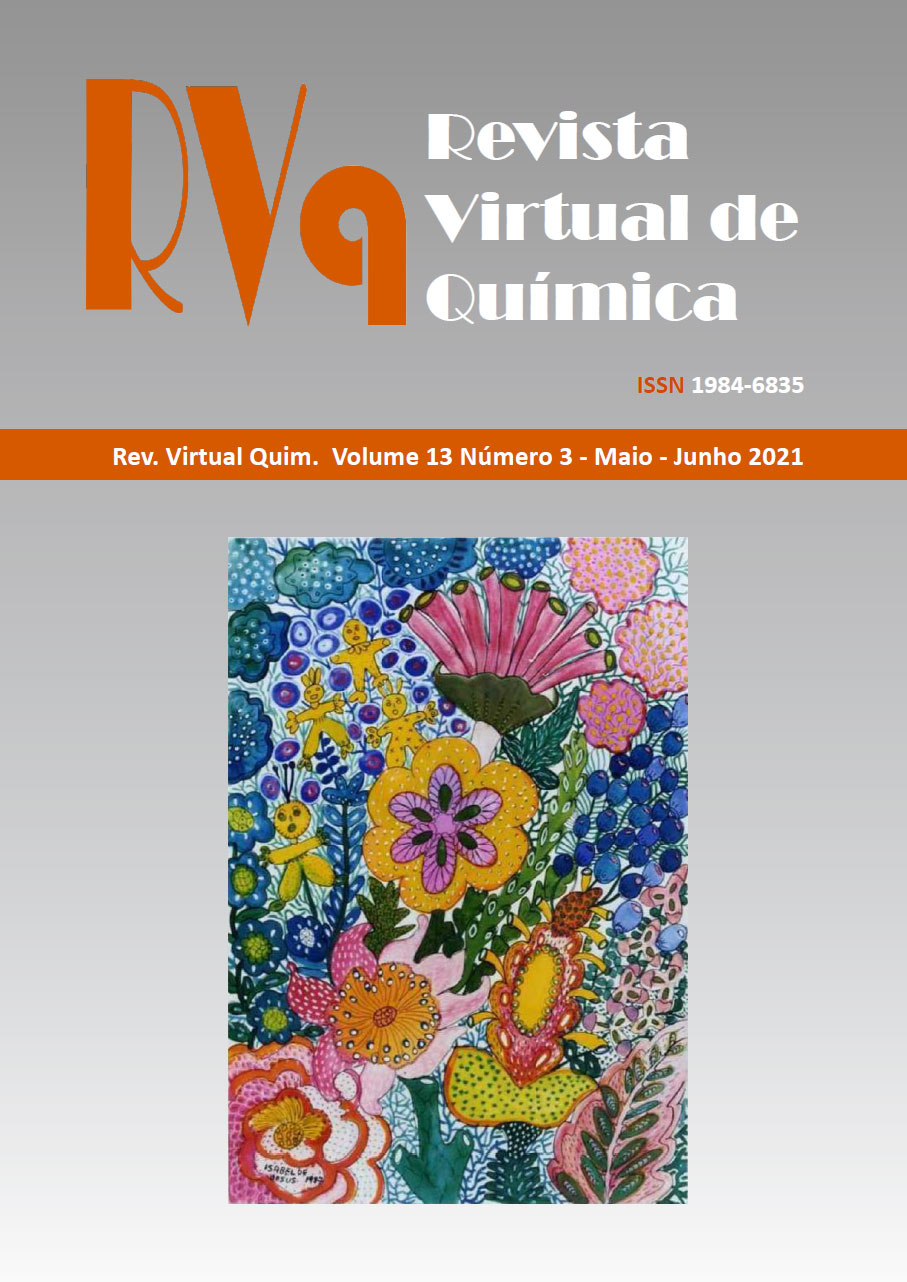
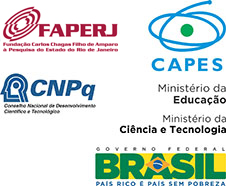
vol. 13, No. 3, 2021, p. 593-844
Procedimentos de Submissão para Open Access
Os manuscritos submetidos na Revista Virtual de Química (RVq) adotam a implementação total do sistema open access, onde os autores contribuem com parte dos custos da Publicação de seus artigos. Ver mais...
Contribuições do PROFQUI aos esforços para melhoria da Educação Básica em Química no Brasil
Bárbara Vasconcellos da Silva  ; Bianca Peres Pinto
; Bianca Peres Pinto  ; Márcia Rosa de Almeida
; Márcia Rosa de Almeida  ; Michelle Jakeline Cunha Rezende
; Michelle Jakeline Cunha Rezende  ; Nadja Paraense dos Santos
; Nadja Paraense dos Santos
http://dx.doi.org/10.21577/1984-6835.20210011
Educação Ambiental e Ensino de Química: Relato Docente sobre Atividades Pedagógicas para Abordar o Conteúdo Curricular
Adriana Tavares dos Santos; Priscila Tamiasso-Martinhon; Célia Sousa; Angela Sanches Rocha
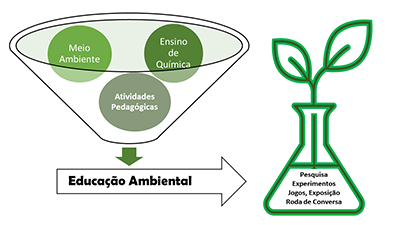
Environmental Education could be performed at the school transversally through pedagogical activities in Chemistry classes, such as games, experiments, research, exhibitions and debates, among others.
http://dx.doi.org/10.21577/1984-6835.20210032
Stop Motion e Semiótica na Criação Audiovisual: Elementos de uma Atividade com Estudantes no Ensino Médio
Allan Rangel Campos; Waldmir Nascimento de Araujo Neto
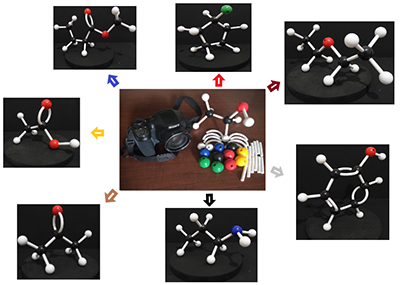
Producing videos with stop motion. The image shows pictures with representations of molecules in ball-stick models. With a camera, structural pieces and great care, several photos give life to what was previously stopped. Make your students producers.
http://dx.doi.org/10.21577/1984-6835.20210033
Planejamento Pedagógico Reverso Aplicado ao Experimento "Método da Fronteira Móvel"
Angela Sanches Rocha  ; Eduardo Gullo Muller Lopes; Leonardo Vitor Belo Pazutti; Neuza de Almeida Araújo Vital; Priscila Tamiasso-Martinhon; Célia Sousa
; Eduardo Gullo Muller Lopes; Leonardo Vitor Belo Pazutti; Neuza de Almeida Araújo Vital; Priscila Tamiasso-Martinhon; Célia Sousa
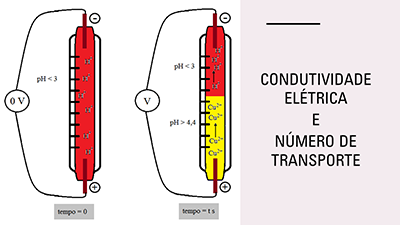
The concepts of mobility and conductivity of ions in solution could be learned by means of experimentation, as pedagogical activity, and the determination of the transport number by Moving Boundary Method is a simple option.
http://dx.doi.org/10.21577/1984-6835.20210034
Energia Nuclear: Importância, Conceitos Químicos e Estrutura das Usinas Nucleares
Daniella Rodrigues Fernandes; Iromar Coelho da Silva Campos Júnior; Marcio Panta da Silva; Vanderson de Oliveira Araujo; Bárbara Vasconcellos da Silva; Nadja Paraense dos Santos; Michelle Jakeline Cunha Rezende
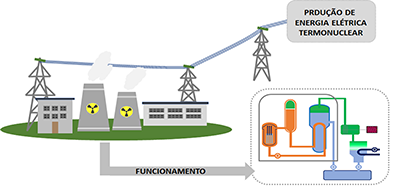
The stages of operation of a nuclear power plant are presented, as well as a brief discussion of nuclear chemistry aiming at the production of thermonuclear electric power in the world and its accident risks.
http://dx.doi.org/10.21577/1984-6835.20210035
Plano Orientador "Grupos Cromóforos e sua Relação com a Cor": Produto Educacional para uma Abordagem Experimental Investigativa da Química Orgânica no Ensino Médio
Darléia Alessandra Posser Barboza; Aloir Antonio Merlo; Maurícius Selvero Pazinato

The Guiding Plan "Chromophore groups and their relationship with color" is a support material for high school chemistry teachers, which contains several steps that give an investigative character to experimentation, and aim at the development of higher order cognitive skills in students.
http://dx.doi.org/10.21577/1984-6835.20210036
Uma Proposta de Ensino de Equilíbrio Químico através de Videoaula Utilizando uma Ferramenta de Aplicação Cotidiana
Éder Barros de Almeida; Roseli Martins de Souza; Simone Pereira da Silva Ribeiro
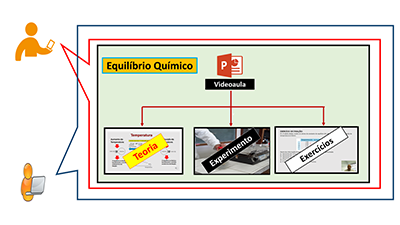
Theoretical and experimental chemistry class related to Le Chatelier´s principle in chemical equilibrium is reported using video class created and edited by MS Power Point - thought as a strong tool to learning process - and later presented by mobile phones and notebooks.
http://dx.doi.org/10.21577/1984-6835.20210037
Unidade Temática sobre Mineração do Carvão: Uma Proposta para o Ensino de Termoquímica com Enfoque CTS
Gisele do Livramento; Daniel das C. A. Ribeiro; Nathália M. Simon; Lívia Streit; Camila G. Passos
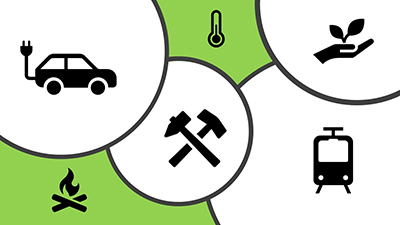
The set of activities of the Thematic Unit analyzed in this article converges with the principles of the STS perspective. Thus, may favor students' reflection on the environmental and social impacts of mining and the production of electric energy through non-renewable sources.
http://dx.doi.org/10.21577/1984-6835.20210038
A Música como Instrumento Lúdico na Aprendizagem das Interações Intermoleculares dos Compostos Orgânicos
Isaías Francisco dos Santos; Ivoneide de Carvalho Lopes Barros; Carla Verônica Albuquerque Almeida; Luciene Santos de Carvalho
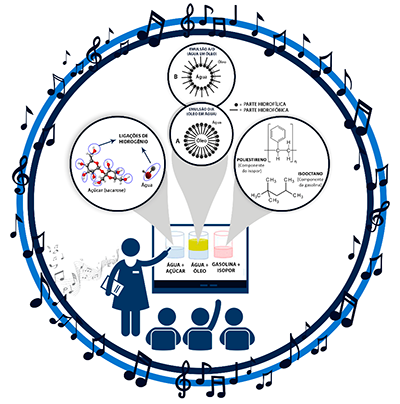
An approach of the teacher with the students, aiming at learning intermolecular interactions and the properties resulting from them, being applied to the creation and presentation of musical parodies by the group, regarding this content.
http://dx.doi.org/10.21577/1984-6835.20210039
O Ensino de Energia em Ciências: Breve Levantamento dos Trabalhos Publicados sobre o Tema
Leonardo Fillipe de Souza e Souza, Michelle Jakeline Cunha Rezende

Energy is an extremely important topic for science education, but its understanding is associated with an abstraction and complexity. Thus, a review of the works already published can contribute to a direction in the pedagogical approach on the concept of energy.
http://dx.doi.org/10.21577/1984-6835.20210040
Tecnologias Digitais no Ensino de Química: Uma Breve Revisão das Categorias e Ferramentas Disponíveis
Luan D. de Souza; Bárbara V. Silva  ; Waldmir N. Araujo Neto; Michelle J. C. Rezende
; Waldmir N. Araujo Neto; Michelle J. C. Rezende
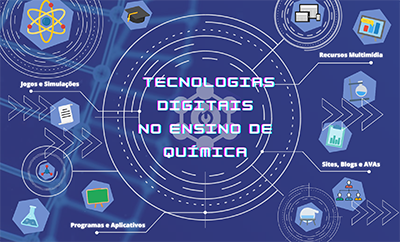
Digital Technologies - such as multimedia resources, mobile devices, websites, blogs, VLEs, online journals, programs and applications, games and simulations - are important allies in the Teaching of Chemistry.
http://dx.doi.org/10.21577/1984-6835.20210041
Experimentação como Estratégia para Abordar a Temática Nanotecnologia no Ensino Médio numa Perspectiva CTSA
Geni dos S. Maria; Daniel das C. A. Ribeiro; Camila G. Passos  ; Maria do C. M. Alves
; Maria do C. M. Alves
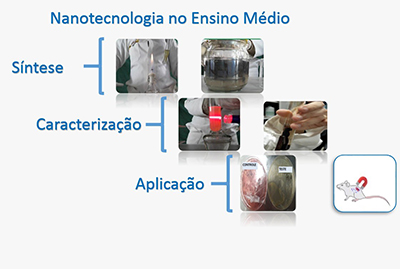
This paper presents results of a qualitative investigation on the use of experimentation with focus on the Science, Technology, Society and Environment (STSE) interface, to approach the contents of atomic structure and material properties based on the theme Nanotechnology.
http://dx.doi.org/10.21577/1984-6835.20210042
Explorando as Potencialidades da Experimentação a partir de Células Eletrolítica e a Combustível como Recurso Didático na Sala de Aula do Ensino Médio
Marlon Max dos Santos Silveira, Valéria Almeida Alves,  , Luís Antônio da Silva
, Luís Antônio da Silva
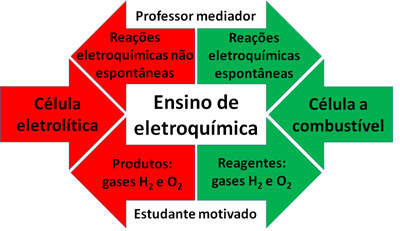
The didactic sequence was based on experimentation for teaching electrochemistry. The experiments were carried out using electrolytic and fuel cells, and their relationship with observations from oxidation and reduction half-reactions. The activities performed were well accepted by the students, fostered interaction among the participants and resulted in important learning.
http://dx.doi.org/10.21577/1984-6835.20210043
EsteQuiz - um Jogo Didático para o Ensino de Estequiometria
Rochele da S. Fernandes; José R. Gregório

EsteQuiz is a didactic game about stoichiometry. The game is free and can be played on Android system or using any browser. EsteQuiz was developed based on a previous research about difficulties presented by students concerning this content.
http://dx.doi.org/10.21577/1984-6835.20210044
Utilização do Sal em Alimentos como Ferramenta para o Ensino de Química em Nível de Ensino Médio em uma Escola Estadual do Rio de Janeiro - Brasil
Rosane F. P. Gonçalves; Luís Felipe C. Ramos; Cristiane Dinis Ano Bom; Paula M. L. dos Santos; Danielle M. P. de Oliveira
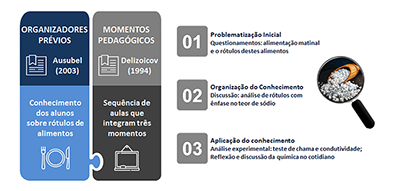
In this work, the discussion about the importance of salt in foods in chemistry classes in high school was based on the theory of meaningful learning, and the proposed practical method was developed using the three pedagogical moments.
http://dx.doi.org/10.21577/1984-6835.20210045
Termoquímica em Quadrinhos: Uma Ferramenta Didática para o Ensino de Conceitos Químicos no Ensino Médio
Thiago A. V. Garcia; Tania D. M. Salgado

This comic book is the Educational Product of a master's student at PROFQUI and was created to teach introductory concepts of thermochemistry. The use of comics unites images and texts and facilitates the understanding of concepts, by connecting students' daily lives and scientific knowledge.
http://dx.doi.org/10.21577/1984-6835.20210046
Utilização de Experimentos Investigativos para a Identificação de Competências e Habilidades em Alunos de uma Escola de Ensino Médio do Estado do Ceará
Francisca R. G. Lima, Fernanda Marur Mazze, Ana C. F. de Brito Pontesa
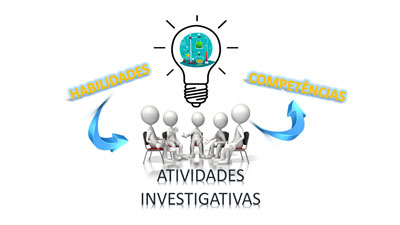
Identification of the skills and competences of the students of the 2nd year of high school after carrying out investigate experimental activities related to the thermochemistry content, addressing the theme of combustion
http://dx.doi.org/10.21577/1984-6835.20210047
Aprendizagem Baseada em Problemas Utilizando a Avaliação da Qualidade da Água para o Ensino dos Conceitos de Teoria Ácido-Base e Soluções
Ezequiel Luiz da Silva; Simone Pereira da Silva Ribeiro; Roseli Martins de Souza  ; Michelle Jakeline Cunha Rezende
; Michelle Jakeline Cunha Rezende
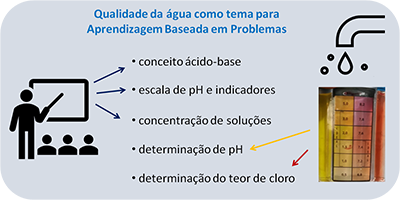
A high school class learned concepts of acid-base theory, pH and concentration of solutions by determining the pH and chlorine content of the water consumed by them using colorimetric testing.
http://dx.doi.org/10.21577/1984-6835.20210048
Uma Proposta para a Abordagem da Tabela Periódica nos Cursos de Formação de Professores de Ciências e no Ensino Médio a partir do Tema Metais
Sérgio de Oliveira Freitas, Pedro Ivo da Silva Maia, Carla Regina Costa
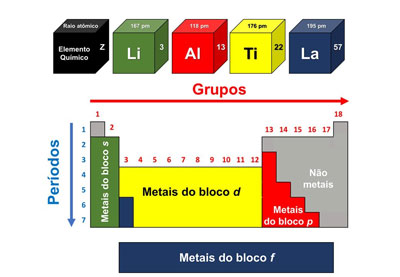
In this article, a playful didactic proposal is presented to approach the Periodic Table from the theme of metals. In the banner, each block in the Periodic Table is presented in a color and each metallic element has its characteristics indicated on the face of a cube with the color of the corresponding block.
http://dx.doi.org/10.21577/1984-6835.20210049
Aplicação de uma Sequência Didática para o Ensino Médio na Temática Drogas através do Arco de Maguerez para a Desmistificação da Ciência
Paulo Eduardo Netto dos Santos; Carlos Alberto da Silva Riehl
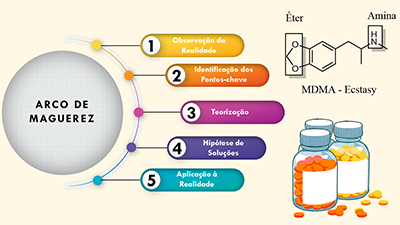
This work presents the application of a didactic sequence with the thematic drugs based on the Maguerez Arc to students graduating from high school to discuss the relevance of science and its professional.
http://dx.doi.org/10.21577/1984-6835.20210050
Editoria da RVq - Editoria da RVq - PubliSBQ
Instituto de Química, Universidade Federal Fluminense,
Campus do Valonguinho, 24020-141, Centro, Niterói-RJ, Brasil
E-mail: rvq@sbq.org.br
